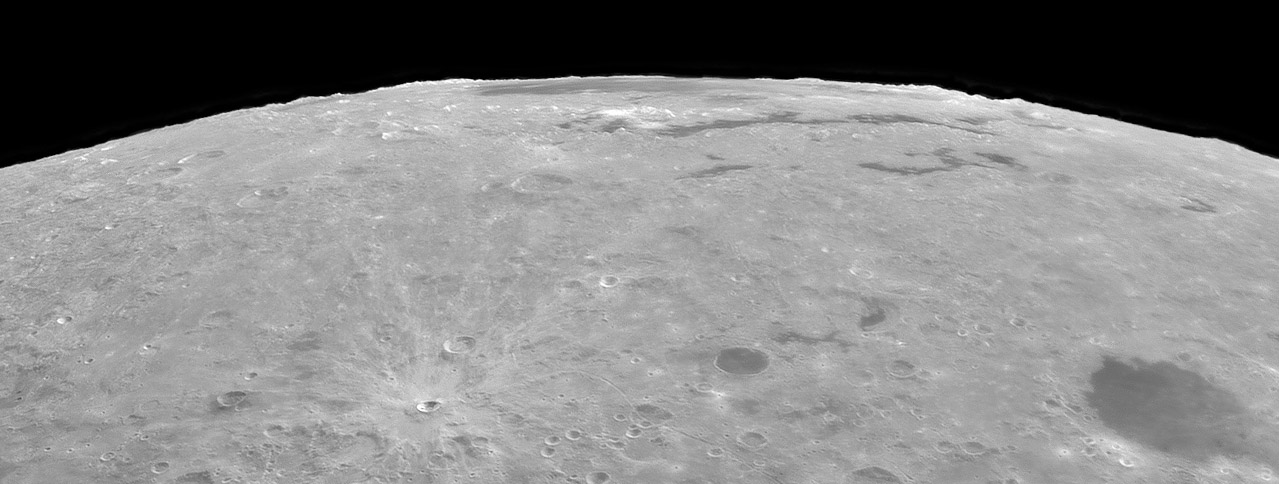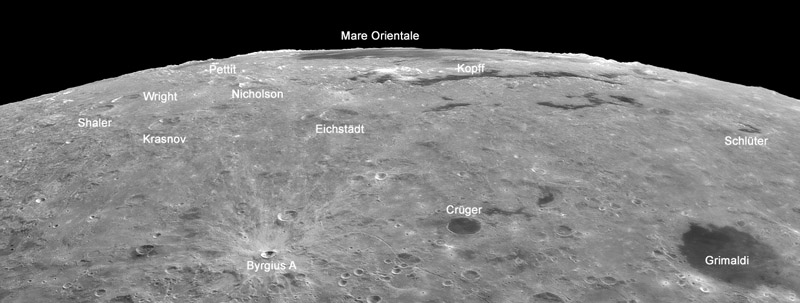Difference between revisions of "July 2, 2008"
(Created page with "__NOTOC__ =Inside Orientale= <!-- ws:start:WikiTextHeadingRule:1:<h1> --> <!-- ws:start:WikiTextLocalImageRule:7:<img src="/file/view/LPOD-July2-08.jpg/34882319/...") |
|||
| Line 17: | Line 17: | ||
[http://objectstyle.org/astronominsk/index_en.htm Website] of Yuri, Konstantin and Mikhail.<br /> | [http://objectstyle.org/astronominsk/index_en.htm Website] of Yuri, Konstantin and Mikhail.<br /> | ||
<br /> | <br /> | ||
| + | <p><b>Yesterday's LPOD:</b> [[July 1, 2008|LPOD, Version 4.0]] </p> | ||
| + | <p><b>Tomorrow's LPOD:</b> [[July 3, 2008|Worlds in Evolution]] </p> | ||
<hr /> | <hr /> | ||
| − | |||
| − | |||
Revision as of 22:21, 4 February 2015
Inside Orientale

image by Mikhail Abgarian, Yuri Goryachko, Konstantin Morozov, Minsk, Belarus
It's not often that you can see so well inside the 930 km wide Orientale impact basin that the named craters can be identified (see smaller annotated image below). Of course, Orientale is so young that there are few large craters inside it, most of the named ones are on its rims. The outer rim - the Cordillera Mountains - are mostly a scarp facing away from us so there aren't many mountains seen in profile. The edge of the Cordilleras passes by Shaler, Krasnov and Eichstädt, outside the small mare deposits of Lacus Autumni and then limbward of Schlüter. You can see a profile view of the Cordillera as a bump on the limb. Inside the Cordillera are two circular mountain chains - the Outer and Inner Rook. Pettit and Nicholson are on the Outer Rook, which bounds the longer ribbon of mare called Lacus Veris. The bright peaks just inside Veris are the Inner Rooks. The crater Kopff, just visible above the letters "o" and "p" of its name, is at 90° W latitude, and this image sees considerably beyond that, and beyond Mare Orientale itself, to the farside of the Rook Mountains at roughly 104° W. This wonderful panorama is just a small piece of an excellent - and huge - mosaic by three Belarusian imagers - visit their Website for more amazing images, including the beginning of their image map of Mercury.
Chuck Wood

Technical Details
June 27, 2008. Maksutov-Cassegrain Santel D=230mm F=3000mm, Astronomik Planet IR Pro filter (IR-pass 807nm+), Unibrain Fire-i 702 CCD b/w camera, (IEEE-1394, 1388x1040, 10fps, 12bit), Processing in Registax & Maxim DL. Mosaic of 12 images. Seeing 7/10, Trans 5/5. In addition to adding the names to the small image I enhanced to to improve detectability of the craters.
Related Links
Rükl plates 39, 50 & 61
Website of Yuri, Konstantin and Mikhail.
Yesterday's LPOD: LPOD, Version 4.0
Tomorrow's LPOD: Worlds in Evolution



